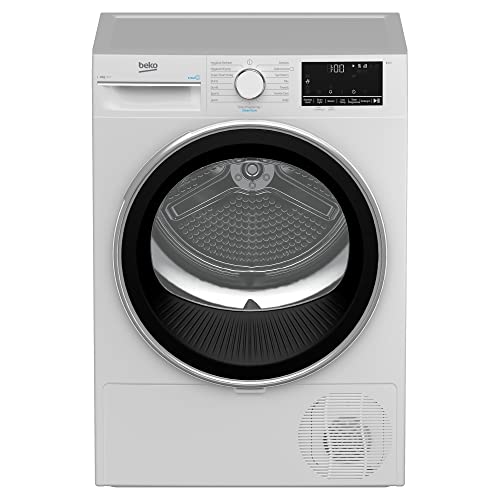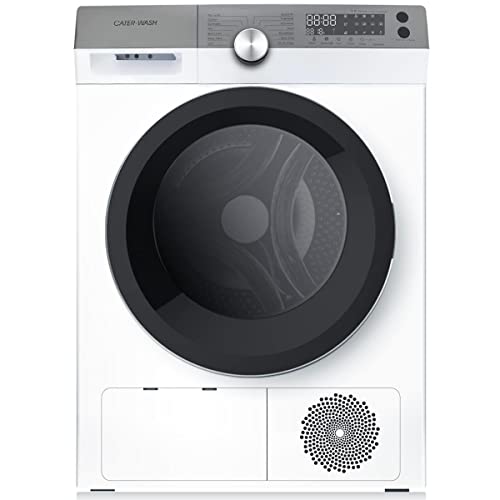포토센서 Find Out What Washer Dryer Heat Pump Tricks Celebs Are Utilizing
페이지 정보

본문
 Why Buy a Washer Dryer Heat Pump?
Why Buy a Washer Dryer Heat Pump?If you are looking for an all-in-one washer/dryer look into a heat pump model. These ventless models take a bit longer to dry and consume more energy than traditional vented dryers, however, they are quieter and don't require ducting or ventilation.
 They use the heat pump loop to move air around, and recirculate the water that evaporates from the clothing into a drain tube. Find out more about the technology that make up these Energy Star-certified machines.
They use the heat pump loop to move air around, and recirculate the water that evaporates from the clothing into a drain tube. Find out more about the technology that make up these Energy Star-certified machines.Evaporative Drying
Evaporative drying removes moisture from your clothing by using hot air to evaporate the water. It takes longer to evaporate than dryers that use heat. However, as NYC shifts towards a half-natural gas energy mix and a greater use of renewable sources of energy in the next 10-20 years it is possible to see an increase in the efficiency of your dryer. In the case of the washer dryer heat pump it uses electricity to draw heat from the air and transform it into the heat required for evaporation. In the end, they use less energy than traditional dryers.
A heat pump dryer functions similar to a conventional dryer however, it includes the components of an air conditioning refrigeration system (evaporator and condenser). The refrigerant cycle's cooling section is used to dehumidify dry air, that is then passed through the heat pump's evaporator. The dryer then re-heats dry dehumidified air in order to provide the drying heat.
This process generates an abundance of condensation water that needs to be discarded. This can be done manually with the help of a draining hose, or by using a device that directs water flow from the airflow to a tub or sink in the laundry room. Researchers have investigated the efficiency of heat pumps in drying processes. They have focused on assessing performance in relation to the dehumidification. A good method for this is exergy analysis. Exergy analysis compares the effectiveness of a process to its ideal performance. This can be determined by determining the amount of energy needed to achieve the desired outcomes in the process.
In theory, the process will produce energy that is equal to its input or more however this isn't always feasible especially in a heat pump dryer. This is because a certain amount in the heat vaporization process can be included in the energy of evaporate.
Researchers have examined the performance of the heat-pump dryer by through a computer simulation. The results of this study suggest that the energy efficiency of a heat pump dryer is contingent on the amount of dehumidification energy it generates, the air temperature in the evaporator, and the proportion of recirculating air to dry air in the evaporator.
Drying of Water Condensation
If you're looking to go more eco-friendly than evaporative drying, you can buy washer dryer heat pump combos that use water condensation to dry clothes. They're usually more expensive than conventional units, but they could also be less expensive to run.
The majority of combination washer-dryers that utilize condensation drying function similarly to regular tumble dryers, except that they heat up the air that's sucked from the clothes, and then cool it down so that the air's moisture condenses back to water and is then removed. The cool air is then returned to the drum, where it's heated and evaporated until the clothes are dry.
The energy required by these dryers is much less than that used by electric or gas dryers of the past however they're still more than twice as costly to operate as standard dryers. The dryers have to warm a large portion of the air in order to vent it out.
These washer/dryers can save more energy than the unit itself. They are suited for households with low electric costs.
If your laundry room has windows, you can save money by connecting the dryer directly to an outside drainpipe. This is called ventless dryer.
If you decide to use a dryer that uses this method, ensure to connect it correctly. The connector to connect the hose is located at the right side of the appliance and there's usually an holders for the hose on top of it. Take the hose off and put the new one in the holder. Make sure the hose doesn't hang from the holder for more than 10cm. This could cause it to be disconnected from the dryer and cease to function.
Ventless Dryers
Ventless dryers are an excellent option for NYC homeowners who live in apartments or homes that are not compatible with traditional vented dryers. The appliances are more energy-efficient and consume less gas as compared to vented dryers. They are cost-effective in the long term. They are also smaller and don't require an external vent or duct. This means that you can install ventless dryers in your laundry room, or anywhere else in the home.
Ventless dryers dry clothes using two methods: either air-toair condensation or cool-water condensation. They transfer heat from the air to the clothes inside the drum. This makes them more energy-efficient than vented dryers heat pump.
They are more gentle on fabrics since they don't depend on hot-air to dry your clothes. This is crucial, since excessive heat can harm delicate fabrics and cause fade and color bleeding.
Additionally it is true that a heat pump dryer is more efficient than a condensing dryer in terms of energy use. They do this by using an evaporator which converts the air's moisture into water. It is a closed system, so there aren't any wastes.
It is crucial to remember that these appliances require regular maintenance in order to function at optimum levels. They must be cleaned and emptied regularly of any condensed liquid. Some models come with a built-in reservoir that must be cleaned regularly, while others can connect to a drain in the plumbing system for automatic water disposal. To maintain the efficiency and effectiveness of the appliance the lint filter needs to be cleaned on a regular basis.
Energy Efficiency
It is natural that laundry rooms are looking for ways to cut down on their energy usage, washer dryer heat pump especially with energy prices so high and no sign of relief. Replace the standard dryer with an electric heater pump for the washer to cut down on the cost of energy.
These systems draw air from outside and use refrigerant to extract heat from it. The air is then pumped through heat exchangers, and then transformed into heat for drying clothes. This heat is transferred into the drum of the dryer, and used to power the entire cycle. It is also used to heat pump washer dryer water used for washing. The dryer then uses the hot water to drive the spin cycle, further reducing the energy use and reducing costs.
This system operates in two closed cycles, one for the air and the other for refrigerant. The first uses an air-tight fan to blow warm outside air over a set fins on the cold side of the heat pump, which collects heat energy and carries it away via coils located on the cold side. The air is then blown over the fins on the hot side in order to pick up even more energy. This process continues throughout the drying cycle.
When the air is saturated with heat, it goes through a second set of coils on the cold side of the pump and becomes a liquid. The liquid is then transported to a compressor that increases the temperature and transforms it into gas. The liquid is then pumped through the dryer, where it evaporates into hot air and then dries the clothes.
The hot air is then removed from the dryer, which reduces the energy use by a substantial amount. The motor that runs the drum of the dryer is the sole source of energy left. It is only using a small amount of energy throughout the day.
Compared to traditional dryers, which have an Energy Star rating of around 4.3 These dryers can be as much as 28 percent more efficient. This efficiency is due in part to the fact that they don't require a dryer vent and are able to operate during the same temperatures as your central heating and cooling system. The absence of a dryer vent can also lower the cost of installation, and improves the energy efficiency of your home.
- 이전글The Leading Reasons Why People Achieve In The Washers Dryer Combo Industry 24.04.29
- 다음글The Story Behind Energy Efficient Washer Dryer Combo Can Haunt You Forever! 24.04.29
댓글목록
등록된 댓글이 없습니다.
